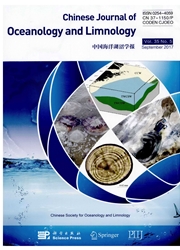

 中文摘要:
中文摘要:
在 1100 nm 的尺寸的 Nanoparticles,或粒子,广泛地在不同应用在世界上被使用。例如,围单人赛的碳 nanotubes (SWCNT ) 通常在消费者产品被使用,例如生物传感器,药和疫苗交货 transporters,和新奇 biomaterials。尽管 nanoparticles 不引起安全担心到使用包含 nanoparticle 产品的消费者,这些小粒子为在工厂里或在分泌物的情况下生产他们到水的生态系统的工人是潜在地有害的。SWCNT 没有自然类似物,因此他们的处理的健康上的效果仍然保持大部分未知。在这研究,我们在颜料和丰满的酸的绿 microalga Chromochloris zofingiensis 和侧面和生产的一张人口上评估了 SWCNT 的效果。水藻在 0 与 SWCNT 被孵化 6 天(控制) , 40, 80, 160,或 320 mg/L 集中。SWCNT 在 C 的生长上显示出积极、否定的效果。zofingiensis,与在底层(40160 mg/L ) 的生物资源改进但是在高水平(320 mg/L ) 的抑制。由对比,丰满的酸的减少的累积和 C 的颜料。zofingiensis 在测试集中的范围上被观察。这些结果显示 SWCNT 的禁止的毒性上的标记在下列顺序是逐渐地敏感的:生物资源和丰满的酸 < 主要类胡萝卜素 < 叶绿素 < 第二等的类胡萝卜素。C。zofingiensis 是为评估 SWCNT 的 ecotoxicological 危险的合适的 microalga,特别以色素沉着反应。
 英文摘要:
英文摘要:
Nanoparticles, or particles in size of 1-100 nm, are extensively used in the world in different applications. For instance, single-walled carbon nanotubes (SWCNTs) are commonly used in consumer products, such as biosensors, drug and vaccine delivery transporters, and novel biomaterials. Although nanoparticles do not cause safety concerns to consumers who use nanoparticle-containing products, these small particles are potentially harmful for workers who produce them in factories or in cases of discharge to aquatic ecosystems. SWCNTs do not have a natural analogue, so the effects on health of their disposal remain largely unknown. In this study, we evaluated the effects of SWCNTs on a population of the green microalga Chromochloris zofingiensis and the profile and production of pigments and fatty acids. The alga was incubated with SWCNTs for 6 days in 0 (control), 40, 80, 160, or 320 mg/L concentrations. SWCNTs showed both positive and negative effects on the growth of C. zofingiensis, with a biomass enhancement at low levels (40-160 mg/L) but inhibition at high levels (320 mg/L). By contrast, a decreased accumulation of fatty acids and pigments of C. zofingiensis was observed over the range of the tested concentrations. These results indicate that the markers on the inhibitive toxicity of SWCNTs are increasingly sensitive in the following order: biomass and fatty acids 〈 primary carotenoids 〈 chlorophylls 〈 secondary carotenoids. C. zofingiensis is a suitable microalga for evaluating the ecotoxicological hazards of SWCNTs, especially in terms of pigmentation response.
 同期刊论文项目
同期刊论文项目
 同项目期刊论文
同项目期刊论文
 Heterotrophic cultivation of Chlorella kessleri for fatty acids production by carbon and nitrogen su
Heterotrophic cultivation of Chlorella kessleri for fatty acids production by carbon and nitrogen su 期刊信息
期刊信息
